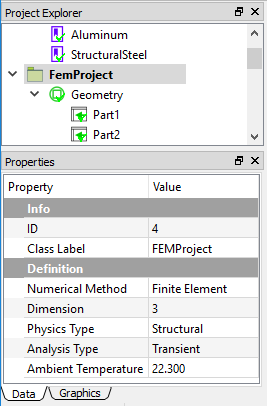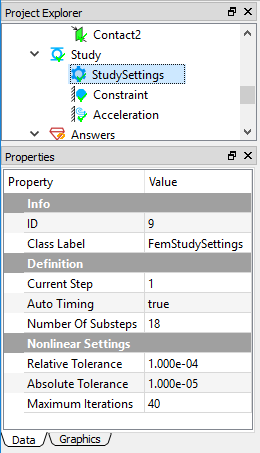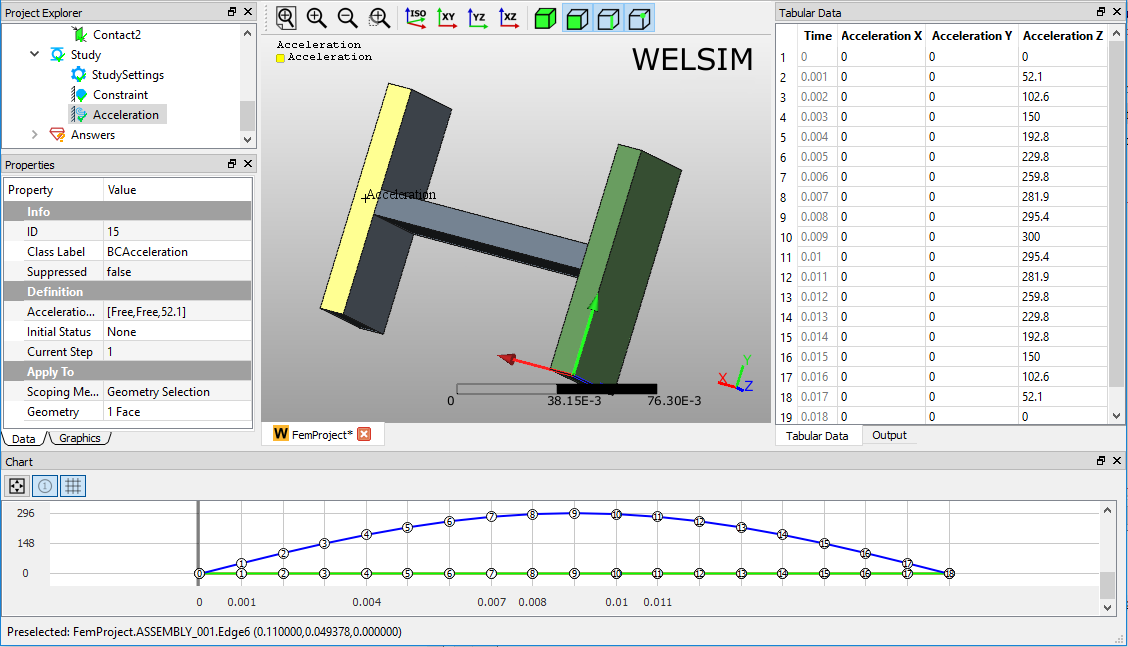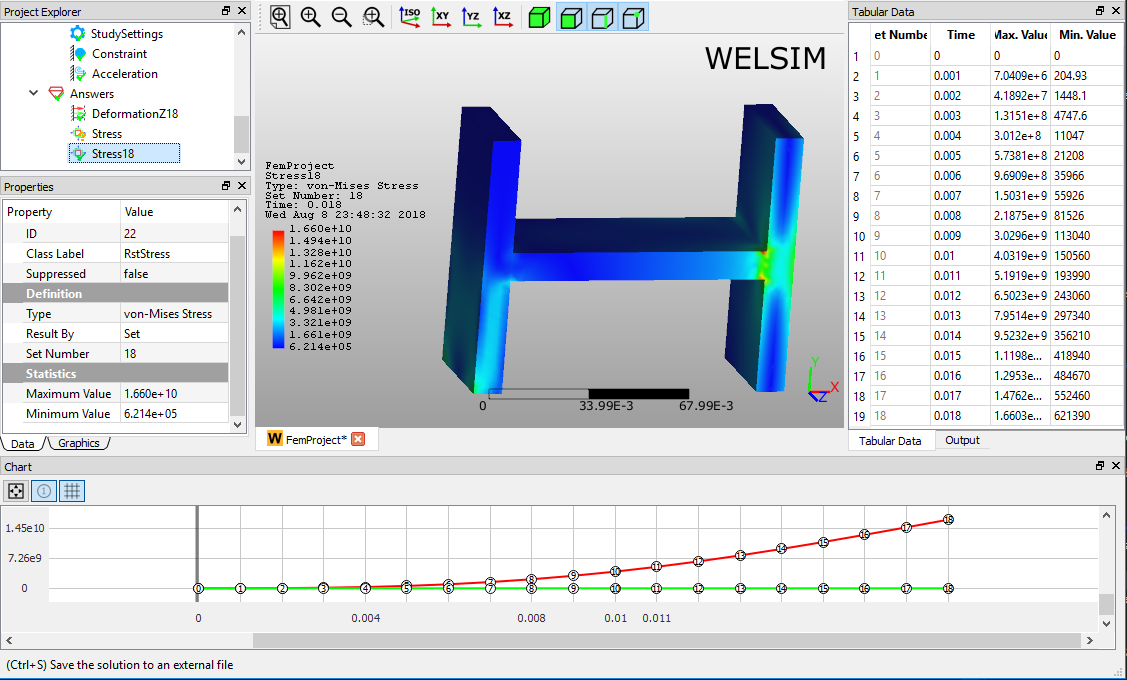Transient structural analysis¶
This example shows you how to conduct a 3D transient structural analysis for an assembly.
Defining materials¶
In this multi-body analysis, we assign Structural Steel and Aluminum materials to different parts. Since a Structural Steel object is already added as you initialize a FEM Project, you only need to insert an aluminum material object by clicking Add Material from Toolbar or FEM Menu.
To edit the material properties, you can double-click the Material object, or right-click on the Material object and select the Edit command from the context menu. In the material editor, you select the Library tab > General Materials > Aluminum Alloy, then click Import button or double-click the Aluminum Alloy entry. The material properties are set as shown in Figure below. Click the OK to save and exit the material editing.
You can rename this new material object to Aluminum by press F2 key or right-clicking.
Specifying analysis¶
In the Properties View of the FEM Project object, you set the Analysis Type property to Transient. A Transient Structural analysis is defined as shown in Figure below.

Preparing geometry¶
Next, you can import the geometry file “h_section_multibody.step” and assign the materials to the corresponding parts. As shown in Figure below, three Part objects in the Geometry group represent three bodies in the Graphics window, respectively. You assign the Aluminum material to the Part2, which is the connection body in the middle, the rest bodies are assigned with Structural Steel material.
Setting mesh¶
To obtain a fine mesh for the analysis, you set the Mesh Settings properties Quadratic to True, and Maximum Size to 5e-3, as shown in Figure below.
Next, you add a Mesh Method object from the Toolbar or FEM Menu. In the property of this object, you select the left body for the Geometry property, and set Maximum Size value to 3e-3, as shown in Figure below.
Clicking the Mesh command from the Toolbar or FEM Menu, you can mesh the geometries. There are 21,117 nodes, and 12,427 Tet10 elements generated as shown in Figure below.
Specifying contacts¶
Next, you need to define two Contact Pairs to bond the three parts into one uni-body for the analysis. Clicking the Add Contact command from the Toolbar or FEM Menu, you add two Contact Pair objects into the tree. You can rename these two objects to Contact1 and Contact2, respectively. Then you select the surfaces for Master and Target Geometry properties as shown in Figures below.
Note
Defining contacts is optional, adding a contact or not is up to your specific model.
Defining analysis settings¶
In this transient analysis, you define 18 steps and set the End Time for each step, as shown in Figure below.

Next, you select the Study Settings object in the tree and set the Substeps property to 18, which determines the total number of substeps of the transient analysis. A screen capture of the defined properties is shown in Figure below.

Imposing conditions¶
Next, you impose two boundary conditions, a Constraint (Fixed Support) and an Acceleration by clicking the corresponding commands from the Toolbar or Structural Menu. In the Properties View of the Constraint object, select the left bottom surface for the Geometry property, as shown in Figure below.
In the Properties View of Acceleration object, set the Acceleration value for the current step, and repeat this value definition for each Step. After defining the acceleration values for all steps, you scope a surface on Part2 for the Geometry property, as shown in Figure below.

Solving the model¶
To solve the model, you can click the Compute command from the Toolbar, FEM Menu, or right-click on the Answers object and select Compute command from context menu. Depending on the complexity of the model, the solving process can be completed in seconds to hours. The Output window displays the solver messages and indicates the status of the solving process. As shown in Figure below, this model is solved successfully.
Evaluating results¶
To evaluate the deformation of the structure, you can add a Deformation object to the tree by clicking the Deformation item from the Toolbar, Structural Menu. A result object may provide multiple sub-result types. For example, a Deformation result object allows you to specify one deformation type from the candidates Deformation X, Y, Z, and Total.
After setting the result Type to Deformation Z, double-clicking on the result object displays the resulting contour in the Graphics window as shown in Figure below. You can click the Evaluate item from the Toolbar or FEM Menu to evaluate the result.

Adding a stress result object is similar. Clicking the Stress result from Toolbar or Structural Menu, you insert a stress object to the tree. Evaluating the default von-Mises Stress Type, you obtain the von-Mises stress contour on bodies in the Graphics window as shown in Figure below. The Maximum and Minimum values of stress data are displayed in the Properties View, Tabular Data, and Chart windows.

Info
This project file is located at examples/quick_structural_transient_solid_01.wsdb.